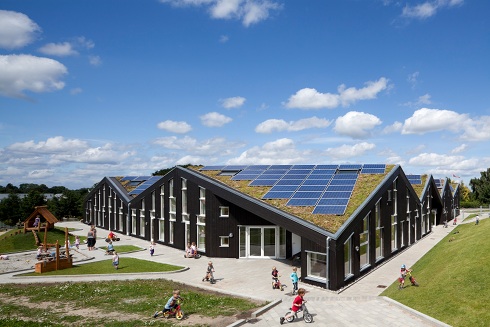Imagine a future. A near future where everyone has all the latest gadgets. One where iPhones fall from trees, MP3 players are rectally inserted at birth, and Disney monitors your children’s every movement via OnStar. Phones run for 12 hours at a time on a single charge and have cancer-curing batteries. American-designed hybrid cars get almost 45 whole miles to the gallon (city only).
But.
What is the point of having all the cool technology in the world if you have no means to power it? These devices require electricity, and we spunk ergs like a drunken matelot on extended shore leave between the legs of the soiled doves of the harbor, and nobody is seen to prevent this.
Cell phone chargers don’t have cutoffs when the phone is charged. A boulder can be classified as Energy Star Compliant. Little more than one-tenth of your house, your appliances, your workplace, or your schools are powered by renewable energy. America, perceived as being the leader in technology consumption and manufacture, is falling hideously behind in the means to run these wonderful, wonderful toys. Behind tiny Denmark, Germany, and even the smallest of Pacific island nations.
Europe, (despite their austerity measures) on the other hand, has done for America’s solar power endeavors what Chris Brown has threatened to do to Jenny Johnson on Twitter. In 2010, countries in the Euro Zone produced 17.3 TWh, with an annual turnover of €2.6 billion ($3,363,579,738.62 USD) and employing 33,500 persons in the manufacture of solar energy alone.
Recently, Denmark announced that it made the country’s 2020 goal of producing 200 MWh a shocking 8 years early. Denmark has worked on these solar power goals since 1996 and wind-power since the early 80s. By 2020, based on current projections, may achieve 1 GWh alone. And since Denmark plans to power half of its grid from offshore wind by 2020 and is halfway to that goal already, it may comfortably achieve its goal of fossil fuel independence well before it’s stated goal of 2050.
It is also worth noting that Denmark is home to companies like Siemens Wind Power, Vestas, and numerous other wind-power technology manufacturers. In 2009, wind power accounted for €5.6Billion ($ 7,244,585,393.11 USD), 8.5 percent of the nation’s exports. Denmark decommissioned the last of its three nuclear reactors in 2006, which is ironic for the nation that generated Niels Bohr.
Immediately south of Denmark lies one of the world’s other headline-grabbing nations in regards to solar power, Germany. Germany has always been hinkey in regards to nuclear power generation. Perhaps being the frontline of Europe’s nuclear theatre throughout the Cold War does that to a country. In September, Germany announced that its solar capacity had hit an all-time high, reaching higher than the rest of Europe combined. Ten miles out to sea, in the freezing, gusty Baltic, 300-feet tall wind turbines at the Baltic 1 Wind Farm, plans are afoot to improve the wind power output further to provide renewable power to 250,000 households.
In 1999, Germany had a solar capacity of 32 MWh. They now produce 30 GWh, a 1000 percent increase over a decade for a country that gets roughly as much sunlight as Alaska. On a good day, that’s the equivalent to 13 nuclear power plants. Between solar, hydro, and wind power, renewable energy accounts for 25 percent of Germany’s power supply. Compare that to just 14 percent in the USA.
Like Denmark, Germany has renewable energy goals set for 2050. The company hopes for 80 percent of its power to come from renewable sources alone. And around 50 percent of that will hopefully come from small companies. One of the reasons for Germany’s success is allowing its citizens to receive subsidies from feeding into the grid, one that Germany’s farmers took to in droves, with renewable power taking up small or negligible footprints on their land. There’s nothing a farmer knows more about than getting luxuriant subsidies (besides soil-yield, area-crop ratios, and getting up ridiculously early to tend the fields).
Plucky Belgium is also getting in on the act, announcing solar-powered tunnels for its railways. Not just any rail, but high-speed rail. Solar powered trains running at over 150 MPH. The future’s here, the future’s Belgium?
Up to 16,000 solar panels have been installed in Antwerp over a two-mile stretch of Infrabel’s rail lines (one of Belgium’s rail operators) that run alongside a forest between Paris and Amsterdam. The panels, covering about 50,000 square feet of pre-existing tunnel, generate an estimated 3300 MWh – the equivalent of around 1000 homes.
[yframe url=’http://www.youtube.com/watch?v=Sc7ahEzVt1U’]
Belgium as a whole has doubled its solar capacity in the last couple of years, producing around 2 GWh, despite only really becoming serious about it’s renewable energy policy in 2004. However, Belgium has decreased its CO2 emissions by 8.6 percent in this short span of time, compared to Germany’s 11.6 percent over the same period or its other neighbor France’s who had saved 8.4 percent.



Helt fantastisk!